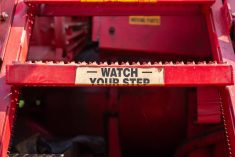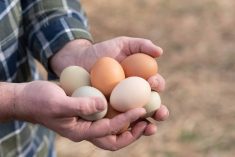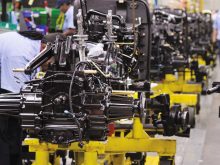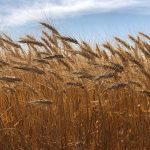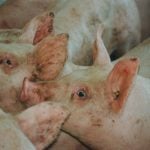It’s been a long time since I’ve watched the movie Groundhog Day, where Bill Murray plays a weatherman doomed to live out the same day over and over again, but I’d say that to see pundits talking — on and around Groundhog Day, of all days — about the suddenly urgent need to diversify Canada’s export markets may have been the next best thing for anyone wondering what Phil the weatherman was going through.
Canadian farmers and ranchers lived that movie back when forces within the United States were pressing to keep Canadian beef out in the final months of the BSE crisis, then again when the Obama administration took a not-bad idea — country-of-origin labelling — and twisted it into the worst imaginable caricature of itself. We’d marvel how a country that presents itself as our closest friend, ally and free-trade partner could unexpectedly turn on us, and again we’d reiterate that if we want to continue as an agri-food exporting nation, we had better start earnestly looking elsewhere for people to buy our stuff.
In many ways, though, this latest rerun is the worst (the worst so far, I should say): an ostensibly pro-business celebrity steps in to again lead that friend, ally and free-trade partner and immediately threatens heavy tariffs to tank the Canadian economy on one of the flimsiest pretexts imaginable (the flimsiest so far, I should say) in order to be seen to address issues too complex for him to quickly manage in any meaningful way. Relationships that businesses on both sides of the border have spent decades cultivating risked being erased by a president who, it turns out, is pro-Trump more than pro-business or pro-anything else.
Read Also

In times of mandatory joy, try to find contentment
If we’re not feeling the joy at a time of year that seems to insist on over-the-top moments of happiness, we can allow ourselves to just try for fulfilled or content, farm family coach Kalynn Spain suggests.
And yes, against that level of unpredictability and unreliability, it’s reasonable and logical, yet again, to look around and see who else is buying or might buy what we have.
The previous efforts to do so, though, have been informative. If you recall the Legacy Fund, a beef market development fund set up by the feds in 2005 and administered by what’s now the Canadian Cattle Association, a 2014 review of that fund’s outcomes found it had helped to improve Canadian beef uptake overseas, but it also found resistance to the flipside: reducing dependence on the U.S. market specifically.
Industry players interviewed in that review pointed out the difficulties and painfully slow pace of opening up new markets overseas, as a reason why we should work instead to preserve a focus on the U.S. To quote one respondent cited in that review: “They have money, they are close and they speak the same language.”
On that first point, fair enough. On the second and third points, any country known as an exporter has had to overcome those. A glance at a map of the world shows neighbouring nations separated not only by language and culture but in some cases even by downright hostilities, the last of which can make it even more of a necessity to look further abroad. Whether Canada’s economy is in the same shape to become such a supplier of choice overseas is another question — but the exploratory work to find out, the preparation of paper trails and the development of brokerages to expedite passage of goods should begin now wherever it hasn’t already.
As for our nearest cross-border relationship, of course there’s a case to be made that the trade flows formed in the four decades since the original Canada-U.S. free trade pact was signed have made our economies too intertwined to extract ourselves now even if we wanted to. The past few weeks, though, have shown that our agreements — even the one President Trump himself signed — have turned out to be only as solid as the biggest player’s willingness to abide by their terms. Diversifying our export destinations at this stage in history remains a good idea. Let’s not kid ourselves, though, that such work can ever happen quickly enough to absorb all the potential impacts of whatever comes next.
Let’s also not pretend, though, that any of us know just what will come next. By the time this issue reaches you in the mail, we’ll soon know only whether Trump still considers the threat of tariffs worthwhile to achieve whatever his actual goals are. A recent policy note by Agri-Food Economic Systems, after the reprieve was granted in early February, offers some good suggestions of what those goals might be — but also wisely doesn’t claim to know which, if any of them, are closest to the truth. Among the possibilities listed there are:
- keeping Canada “off-balance” and inhibiting any future investment in this country without ever having to impose the tariffs;
- imposing the tariffs and using any funds raised to help cover U.S. domestic tax cuts;
- upsetting global currency exchange rates enough to re-centre the U.S. as a hub of manufacturing and processing;
- using the threat of tariffs to shake out new concessions on long-standing U.S. complaints such as Canada’s dairy sector, or to otherwise intimidate the CUSMA partners before that trade pact comes up for renewal next year; and/or
- some or all of the above.
All of those sound like solid possibilities, but I’d add one more: none of the above. Sure, I don’t like to think that U.S. voters just granted all powers of the executive branch of government to someone who’d troll on millions of people worldwide for no productive reason at all, but like everyone else out here, I’m waiting on evidence to the contrary.
Correction
Before we go: in our Jan. 28 issue, we incorrectly identified spraying expert Tom Wolf as “Tom Wolfe” (“Tackling herbicide resistance with smarter spraying,” page 10). We’ve fixed that in the online version, but if you’ve only seen the paper version so far, rest assured we weren’t meaning to identify the late U.S. author of The Right Stuff and The Bonfire of the Vanities as an expert on crop spraying.
Drop me a line with any questions, comments or concerns.
CORRECTION, Feb. 27: The print version of this column (Feb. 25, page 3) incorrectly dated the Legacy Fund review’s year of release as 2015.





